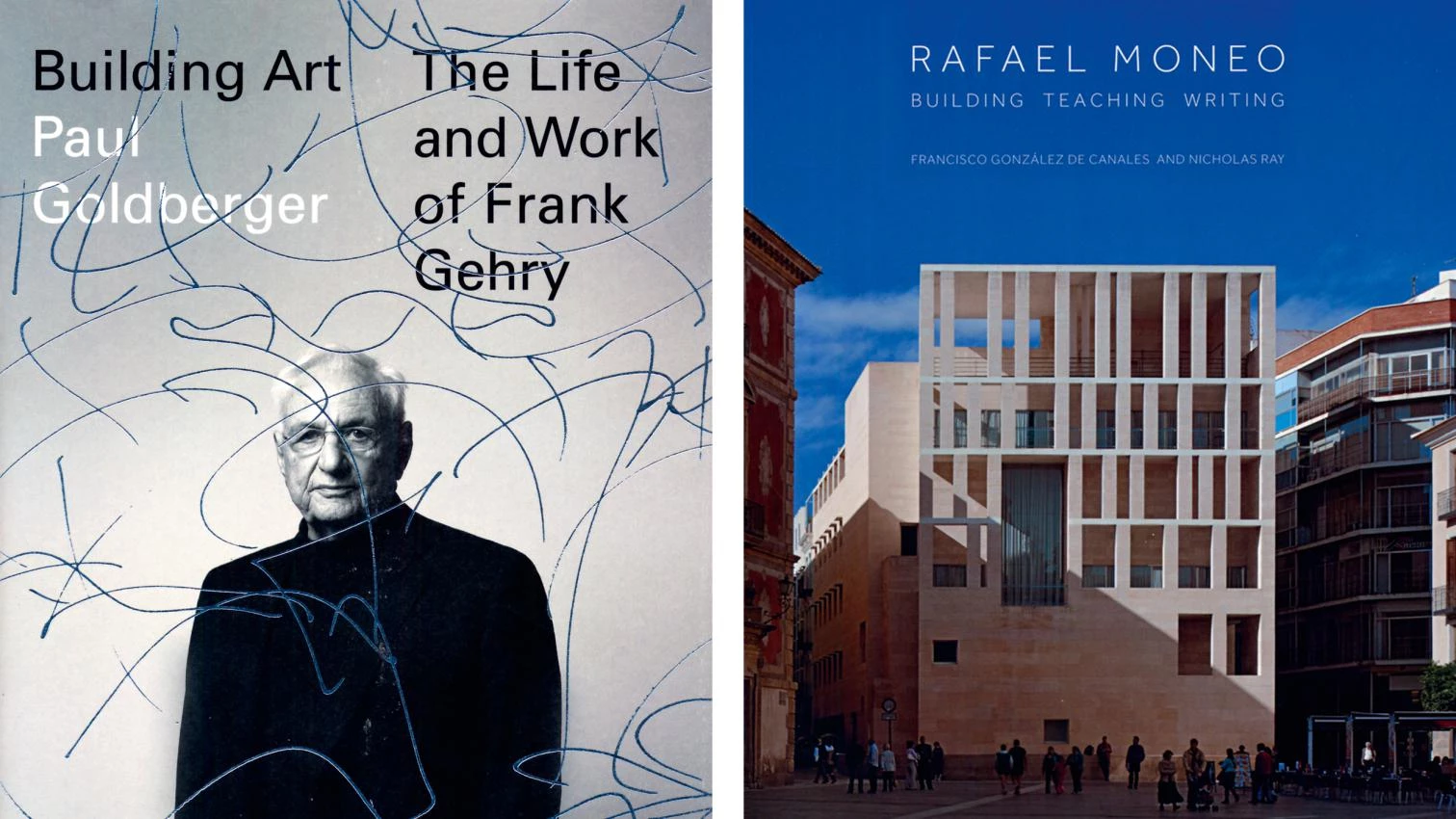
It is not sure that one’s life explains one’s work, but there is no doubt that a biography throws light on the context surrounding a creative career. Cases in point are two new books, on Frank Gehry and Rafael Moneo, which give us a better understanding of their respective oeuvres. The one on the Californian is a biography in the strict sense, and the first ever written by its author, the eminent critic Paul Goldberger; the one on the Spaniard combines biographical account with description of seven works of his and commentary on his architectural thought, a task jointly undertaken by the professors Francisco González de Canales and Nicholas Ray.
Goldberger, a Pulitzer Prize winner who now writes for Vanity Fair, has produced the closest possible thing to an authorized biography, based as it is on numerous interviews with the subject and on unlimited access to the archives of the man often described as the world’s most famous architect. Gehry early on accepted to refrain from reading the text, but this did not increase the book’s critical component given that the author’s admiration for the architect borders on devotion, making the publication so abundant in lights and so scarce in shadows that Ingrid D. Rowland came to call it a ‘hagiography’ in The New York Review of Books.
Apart from its invariably positive tone, Goldberger’s work on Frank Owen Goldberg (Gehry suggested ‘Goldberger on Goldberg’ for title) is well documented and written, and offers a wealth of information that is useful in unraveling his artistic influences, his relationship with clients, and the workings of his office. From the stint in the firm of William Pereira or the discovery of folds in classical statuary while traveling in Europe with the art historians Irving and Marilyn Lavin to the role played in his studio by the likes of Jim Gymph – who introduced CATIA – or the young architect Edwin Chan – who was at the helm of the Guggenheim Bilbao project –, through the importance of clients like Peter Lewis, Rolf Felhbaum, or Thomas Krens, the variety of insights contained in these pages is bound to make the biography an essential work on the architect.
As for the Moneo book, a word must be said of each of its three parts. The actual biography records the events of a life begun in Tudela in 1937, describing in detail the years of training with Oíza, Utzon and in Rome, and paying close attention to the years of teaching in Barcelona and Harvard; there is little new information, but everything is presented with order and clarity. The second part features seven works (Bankinter, Logroño, Mérida, Miró, Kursaal, Murcia, and Los Angeles) and both the selection of projects and the stories of how they developed are efficient and convincing. Less successful perhaps is the last part of the book, on Moneo as thinker; while it starts out with reasonable references to Ortega y Gasset, Torres Balbás, Zevi, or Rossi, it later brings in figures like Deleuze, Negri, or Spinoza, who are harder to place in the intellectual genealogy of Moneo. But these minor objections do not in the least diminish the value of a book on an architect whose built work is inextricably meshed with his teaching and his thinking.







